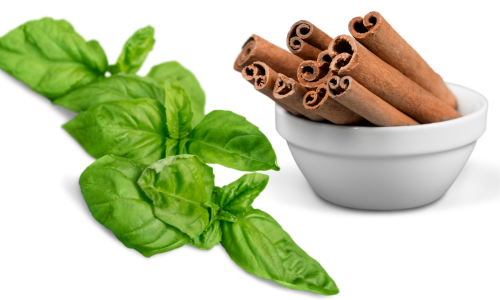We all know that house flies are a nuisance. We also understand that, to some degree, they’re inevitable.
These short-lived, two-winged, weather-sensitive, wound-healing insects, of the order Diptera, have an extraordinary ability to detect odors from great distances. In fact, house flies have been shown to be able to detect odors from up to four miles away. So, one quick flip of a juicy, sizzling patty on your backyard barbecue and a few seconds later, you have a few uninvited guests buzzing around.
Thus, I offer the following four tips. These fly deterrent methods are well worth trying out around your home or business, as they will help to both get rid of flies and keep your fly problem under control.
1. Basil: A fly repelling plant

Basil plants are known to have natural fly-repellent properties and can help keep flies (and mosquitoes) away, as flies detest the strong scent of basil leaves. Thus, planting basil in your garden or placing pots of basil around your porch, your outdoor dining area or in your kitchen windows may help deter flies from coming close. In addition to basil, other plants like rosemary and mint are also known to have natural insect-repelling properties. As an added bonus, you’ll have beautiful flavorful leaves on hand that are good for cooking.
2. Cinnamon
Cinnamon is a bushy evergreen tree of the laurel tree family (Lauraceae). It is a beneficial spice we all know and love and that is believed to have natural fly-repellent properties. The essential oils found in cinnamon contain compounds like cinnamaldehyde and eugenol, which are known to have insecticidal and repellent properties. These volatile organic compounds overpower a fly’s senses and irritate their taste perception (as their taste receptors are located on their feet). When used as a fly repellent, ground cinnamon powder is typically sprinkled in areas where flies congregate or mixed with water and used as a spray.
Cinnamon essential oil, as well as its terpenoid compounds, has proved toxic and with repellent properties against some insects. A study published by Scielo demonstrated that the essential oil of Ceylon cinnamon, or Cinnamomum zeylanicum, at 10% concentration is able to kill 100% of Musca domestica flies, in addition to its repellent effect against horn flies, or Haematobia irritans, in cows naturally infested.
Make your own cinnamon oil fly repellent by mixing 30-40 milliliters of pure water with 10 drops of cinnamon essential oil. (This also works great against mosquitoes.)
3. Vetiver essential oil
Vetiver has great potential for fly management, specifically against larval and adult flies. For toxicity against eggs, its effectiveness was stated as moderate. In a study published by the National Library of Medicine, vetizer proved to be strongly repellent (84%, respectively) for larvae. In another study published by the Journal of Vector Ecology, vetiver oil displayed a strong repellent activity (78%) against house flies and exhibited 100% contact toxicity to larval and adult house flies.
Vetiver grows as a tall grass that can reach over five feet. The oil is distilled from the lengthy root clusters. Here is one DIY recipe:
What you’ll need:
- A 4 oz. spray bottle
- Vetiver essential oil
- A carrier of your choice (vodka or water/witch hazel with an added preservative)
- Polysorbate 20 (emulsifier)
What you’ll do:
- Fill the 4 oz. spray bottle with your carrier almost to the top.
- Add 72 drops of Vetiver essential oil for a 2% dilution.
- Add 1 teaspoon of polysorbate 20.











